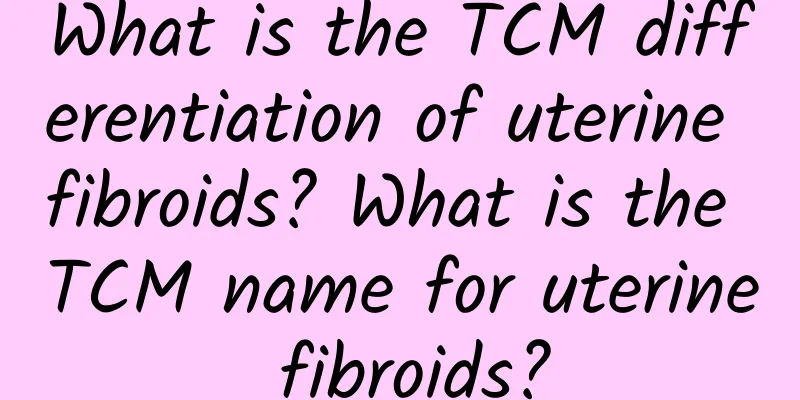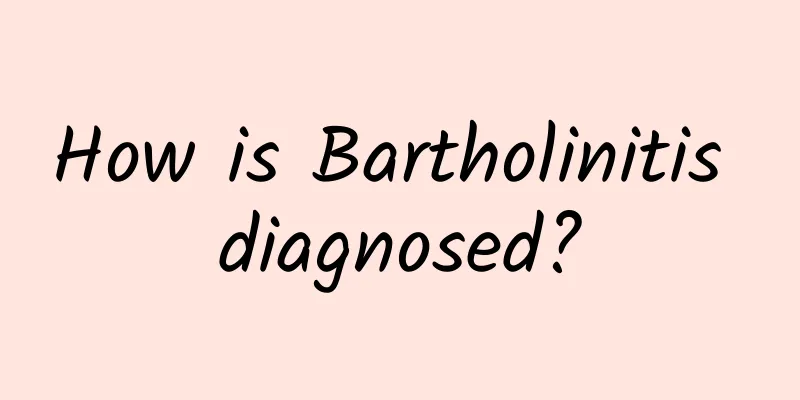What is the TCM differentiation of uterine fibroids? What is the TCM name for uterine fibroids?

|
What is the TCM differentiation of uterine fibroids? What is the TCM name for uterine fibroids? Uterine fibroids, also known as uterine fibroids, are a common gynecological disease, specifically referring to benign tumors that occur in the smooth muscle tissue of the female uterus. With the changes in modern lifestyles and the intensification of environmental pollution, the incidence of uterine fibroids is also on the rise. Traditional Chinese medicine has a unique theory and method of syndrome differentiation and treatment for the treatment of uterine fibroids. The TCM syndrome differentiation of uterine fibroids emphasizes "treatment based on syndrome differentiation" in TCM theory. TCM experts believe that the formation of uterine fibroids is related to factors such as poor circulation of qi and blood, retention of dampness, and stagnation of qi and blood. According to the different manifestations of the disease, it can be divided into different TCM syndrome differentiation types such as qi stagnation and blood stasis type, dampness and stasis type, and qi and blood deficiency type. Qi stagnation and blood stasis is one of the common syndrome types of uterine fibroids. In traditional Chinese medicine theory, qi stagnation and blood stasis lead to meridian blockage and blood stasis. Clinical manifestations include irregular menstruation, excessive or insufficient menstrual blood, dark red menstrual blood, blood clots, etc. At this time, traditional Chinese medicine will use the method of promoting blood circulation and removing blood stasis to regulate the circulation of qi and blood and promote the removal of blood stasis. The dampness and blood stasis type is another common syndrome type of uterine fibroids. In TCM theory, dampness is caused by poor spleen and stomach function or bad eating habits. Dampness gathers in the uterus and interacts with blood stasis to form a knot. Clinical manifestations include prolonged menstruation, increased menstrual blood volume, thicker menstrual blood, abdominal distension or abdominal pain, etc. At this time, TCM will use the method of regulating qi and eliminating dampness to regulate spleen and stomach function and eliminate dampness. Qi and blood deficiency is one of the more complex syndromes of uterine fibroids. In TCM theory, Qi and blood deficiency leads to uterine malnutrition and the formation of fibroids. Clinical manifestations include irregular menstruation, scanty menstrual blood, light menstrual blood, sore waist and weak legs, pale complexion, etc. At this time, TCM will use the method of replenishing Qi and nourishing blood to regulate the balance of Qi and blood and enhance the body's resistance. Uterine fibroids are called "cancer-carrying tumors" in traditional Chinese medicine, which originated from the ancient medical book "Huangdi Neijing". In ancient Chinese medicine, both malignant and benign tumors were called "cancer-carrying tumors". In modern medicine, uterine fibroids are considered to be benign tumors, but because the symptoms of early uterine fibroids are not obvious, they are sometimes misdiagnosed as malignant tumors, so the word "cancer" is retained in the name of traditional Chinese medicine. Although TCM's treatment of uterine fibroids has not been fully recognized in modern medicine, TCM's theory of syndrome differentiation and treatment and rich treatment methods provide another option for patients with uterine fibroids. It is believed that with the progress of scientific research and the accumulation of clinical practice, TCM will play an increasingly important role in the treatment of uterine fibroids. The TCM syndrome differentiation and treatment of uterine fibroids is a complex and unique process, which requires experienced TCM physicians to perform syndrome differentiation and treatment. It is hoped that by strengthening the TCM syndrome differentiation and analysis and research on uterine fibroids, better treatment effects can be provided to the majority of patients, and the development and application of TCM in the field of gynecological diseases can be promoted. |
Recommend
How to diagnose cervicitis
Cervicitis is a common disease among women. It ca...
Cost of endometrial tuberculosis
How much is the cost of endometrial tuberculosis?...
Can I have an IUD inserted if I have pelvic effusion?
There are many reasons for pelvic effusion, inclu...
What kind of surgery is usually performed for uterine fibroids? How long does it usually take to perform a surgery for uterine fibroids?
Uterine fibroids, also known as endometrial fibro...
What are the symptoms of submucosal uterine fibroids?
Submucosal uterine fibroids often cause symptoms ...
What is the cause and pathogenesis of functional uterine bleeding according to traditional Chinese medicine?
"Lan Feng is sick." This sentence from ...
Expert answer: What to eat for ovarian cysts is good for your health
The diet of patients with ovarian cysts generally...
What is the quick way to treat vulvar leukoplakia? Combining medication with physical therapy is more effective for vulvar leukoplakia
Vulvar leukoplakia is medically known as vulvar w...
Do you know the relationship between cervical erosion and pregnancy?
Does cervical erosion affect pregnancy? Under wha...
Does lower body obesity mean a crooked pelvis?
Q: Does obesity in the lower body really mean a “...
Patients with pelvic inflammatory disease can choose appropriate food according to different symptoms
In addition to actively cooperating with clinical...
How to care for uterine effusion and recover quickly
Many female friends do not have a correct underst...
Treatment options for cervical precancerous lesions
Many people want to have a healthy body, but cerv...
Reasons for delayed menstruation in women, why is menstruation delayed for one month
Here is what I share with you about why menstruat...
What causes cervical hypertrophy?
Cervical hypertrophy is a manifestation of chroni...

![[Self-test] Are you a puff girl, a zombie girl, or a muscular man?](/upload/images/67dd150478926.webp)







